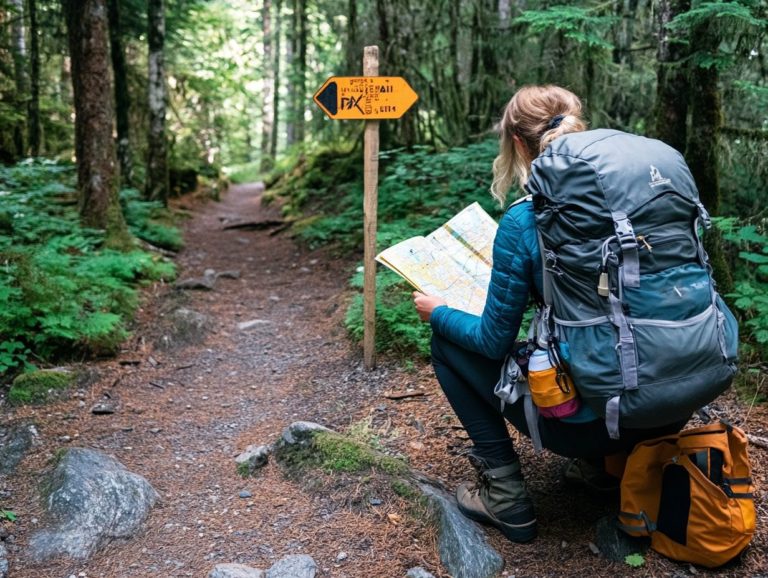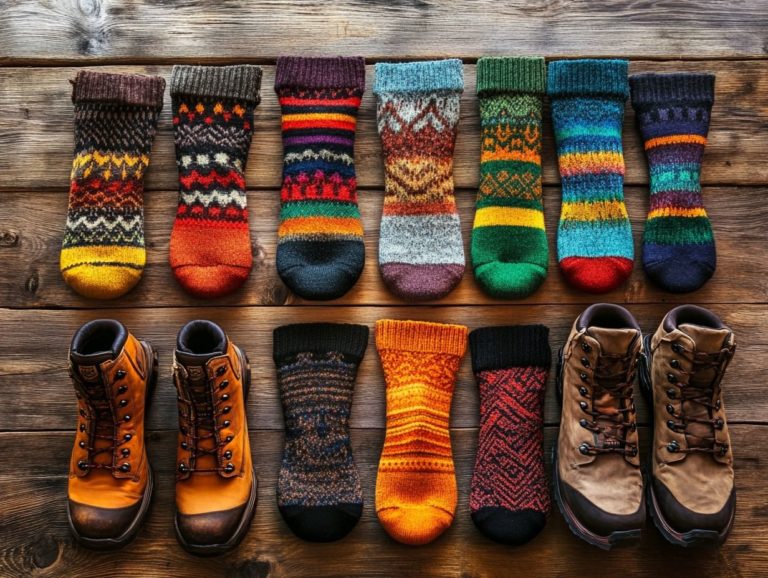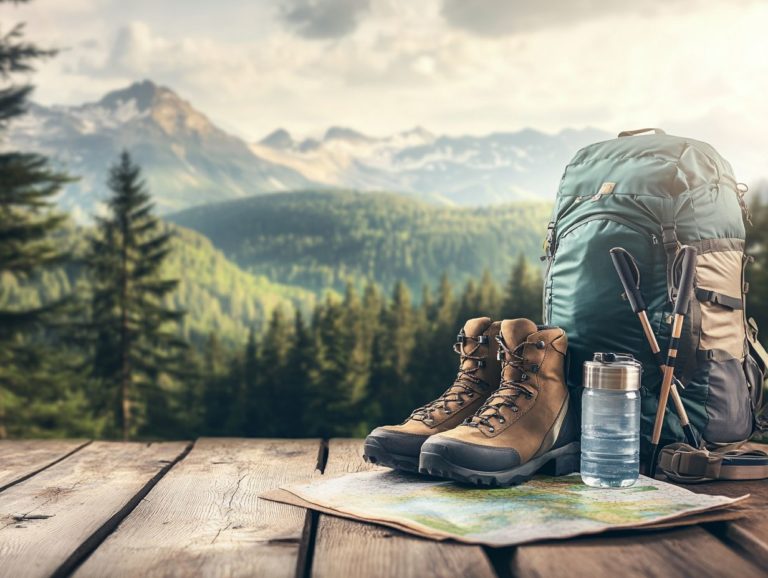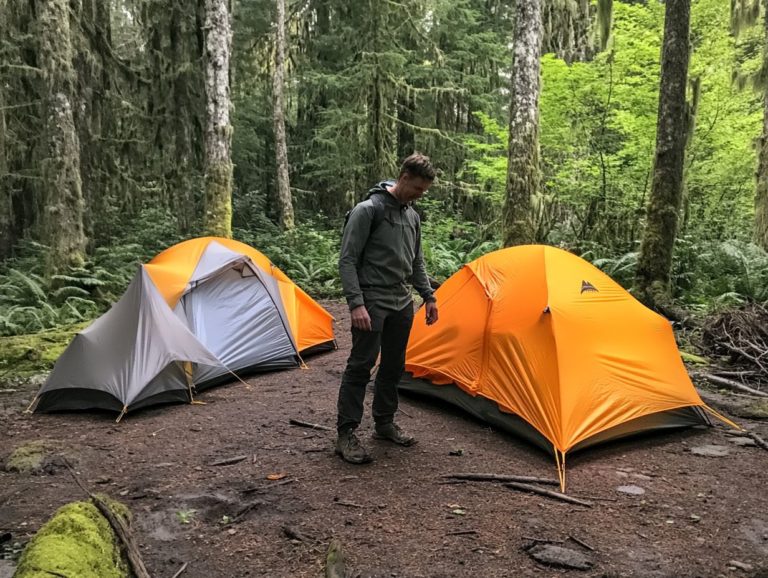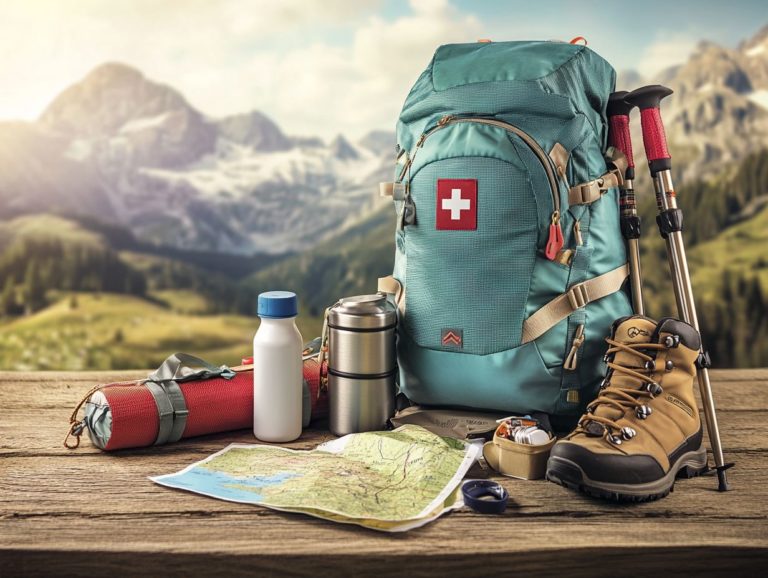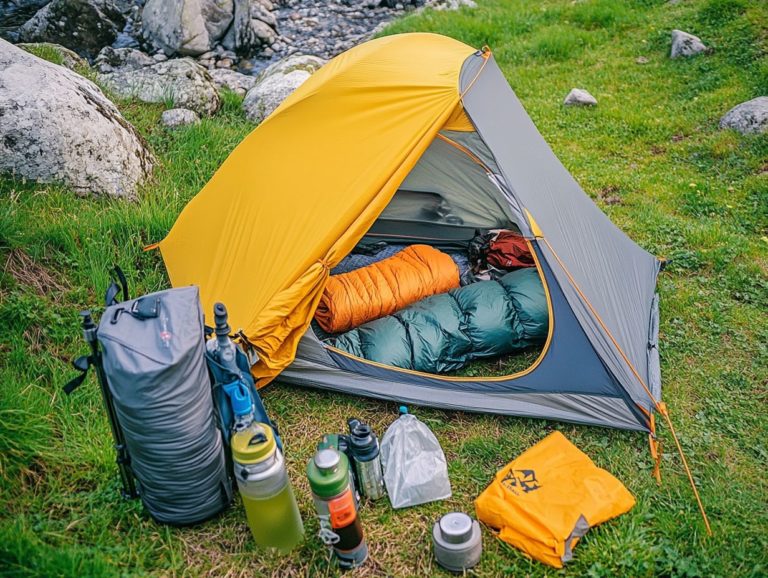How to Stay Hydrated While Hiking
Staying hydrated while hiking is essential for your safety and overall enjoyment. Dehydration can creep up on you unexpectedly, resulting in fatigue, dizziness, and even more serious health complications.
This article delves into the dangers of dehydration, offering insights on how to prepare for your hike and effective strategies to maintain hydration on the trail. It also highlights the importance of rehydrating after your adventure.
Whether you’re an experienced hiker or just beginning your journey, understanding hydration can greatly enhance your outdoor experience.
Contents
- Key Takeaways:
- The Importance of Hydration While Hiking
- Preparing for a Hydrating Hike
- Staying Hydrated During a Hike
- Rehydrating After a Hike
- Frequently Asked Questions
- How can I stay hydrated while hiking?
- What is the best way to carry water while hiking?
- How often should I drink water while hiking?
- Are there any signs of dehydration I should watch out for while hiking?
- Can I rely on natural sources of water while hiking?
- What are some tips for staying hydrated while hiking in hot weather?
Key Takeaways:
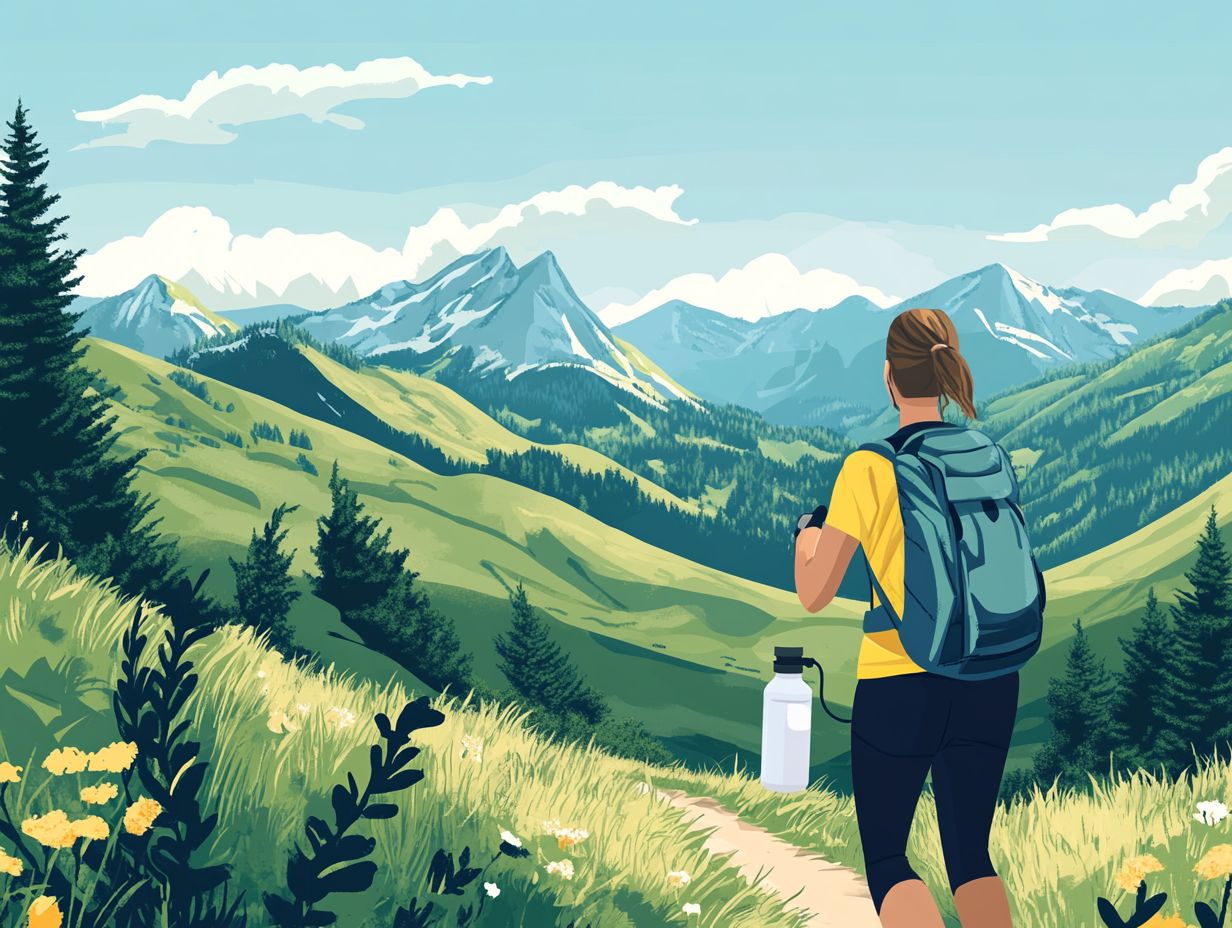
- Always pack extra water to stay refreshed and safe. Carry enough water based on the trail’s difficulty and your hydration needs.
- Plan your route and know where to find water sources along the trail. Don t rely solely on packing enough water for longer hikes.
- Listen to your body and drink water consistently throughout your hike. Pay attention to signs of dehydration and replenish electrolytes, like sodium and potassium, after your hike.
The Importance of Hydration While Hiking
Staying hydrated during hikes is crucial for both your physical and mental performance. Dehydration can diminish your enjoyment of the trail and compromise your safety.
Proper hydration does more than just stave off thirst; it helps maintain your energy levels and supports your overall physical function. Recognizing your hydration needs is vital, especially when navigating challenging terrains and unpredictable weather.
To make the most of your hike, effective hydration strategies are a must! These strategies should include having water bottles or hydration packs to keep your water accessible.
Understanding the Risks of Dehydration
Don t underestimate dehydration; it can be life-threatening, particularly during hikes when your physical exertion is at its peak.
As you venture into the great outdoors, stay alert for signs of dehydration, which can show up as dizziness, dry mouth, fatigue, and muscle cramps. Recognizing these symptoms early can help you take action before they escalate.
The significance of maintaining proper electrolyte levels cannot be overstated; they are vital for effective hydration. A balanced intake of electrolytes helps your body function optimally, avoiding the physical decline that often accompanies dehydration.
To ensure a safe and rewarding hike, regularly check your hydration status and adjust your fluid intake according to your hiking environment.
Preparing for a Hydrating Hike
Preparing for a hydrating hike demands thoughtful planning and selecting the right water bottles to ensure you have ample drinking water for your journey. Choosing the right hydration pack simplifies frequent water consumption while you re on the move.
The amount of water you should carry hinges on several factors, including the hike’s duration and the surrounding environment. Understanding the role of hydration packs in hiking is crucial, as it significantly influences your overall hiking experience. Therefore, assessing your water consumption needs before you embark is essential.
What to Pack and How Much Water to Bring
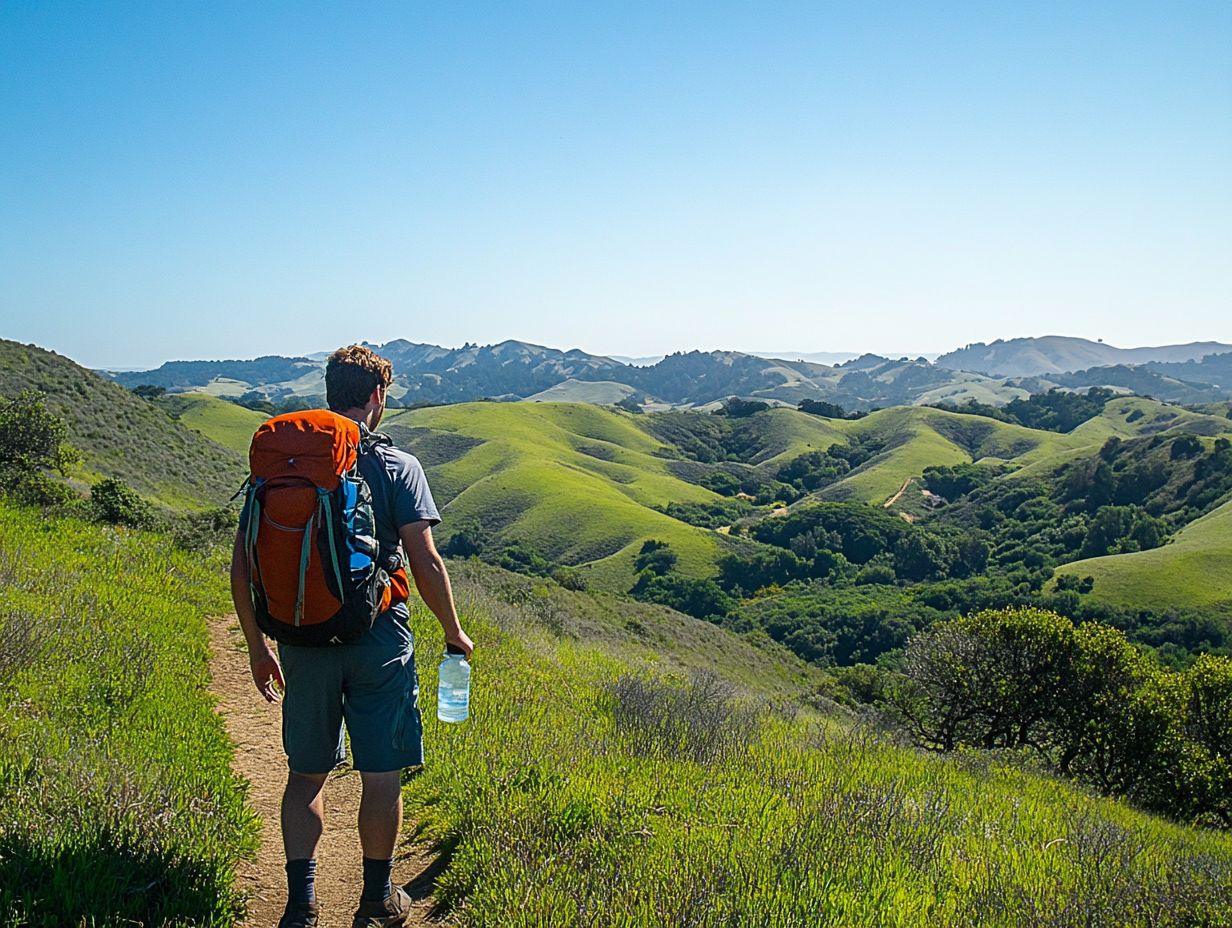
When planning your hike, it’s crucial to know exactly what to pack, particularly when it comes to drinking water. Remember to include hydration essentials like first aid supplies and snacks such as energy bars or trail mix.
Your water needs can vary considerably in different terrains and climates. It’s vital to assess your environment before you set off. A solid guideline is to aim for about half a liter of water for every hour of moderate activity. Keep in mind that factors like temperature and altitude can significantly impact this figure.
Hydration packs from brands like CamelBak or Osprey are convenient for carrying ample water without adding unnecessary weight. Setting reminders on your phone or smartwatch can help you maintain a consistent fluid intake throughout your journey, keeping you energized and ready to savor every moment!
Planning for Water Sources on the Trail
Planning your water sources along the hiking trail is essential to prevent dehydration and ensure your safety during the adventure. Know where you can find water on your hike and techniques for making sure the water is safe to drink.
Choosing reliable sources like streams, springs, or lakes can greatly enhance your overall hiking experience. Scout ahead and mark these sources on your trail map, always considering their proximity and accessibility.
The importance of purifying water from natural sources cannot be overlooked; contaminants can pose serious health risks. Assess your hydration needs based on the distance you plan to cover and the climate conditions to ensure you stay well-hydrated.
Staying Hydrated During a Hike
Staying hydrated during a hike demands a commitment to regular water intake and carefully crafted hydration strategies. This simple habit can keep you feeling great and energized on the trail!
Tips for Consistent Hydration on the Trail
Implementing hydration reminders is a savvy strategy to ensure you drink water consistently throughout your hike, especially in warmer conditions where fluid loss may increase.
Utilize tools like alarms on your smartphone or smartwatch as gentle nudges to remind you to take a sip. Hydration packs equipped with built-in reminders can further streamline this process, allowing you to monitor your fluid intake effortlessly while enjoying your adventure.
Staying hydrated not only boosts your physical performance but also sharpens your focus and reduces the risk of fatigue. To enhance your experience, it’s important to know how to stay warm while hiking. Relish the breathtaking views and challenges that await you on the trail!
Signs of Dehydration to Watch Out For
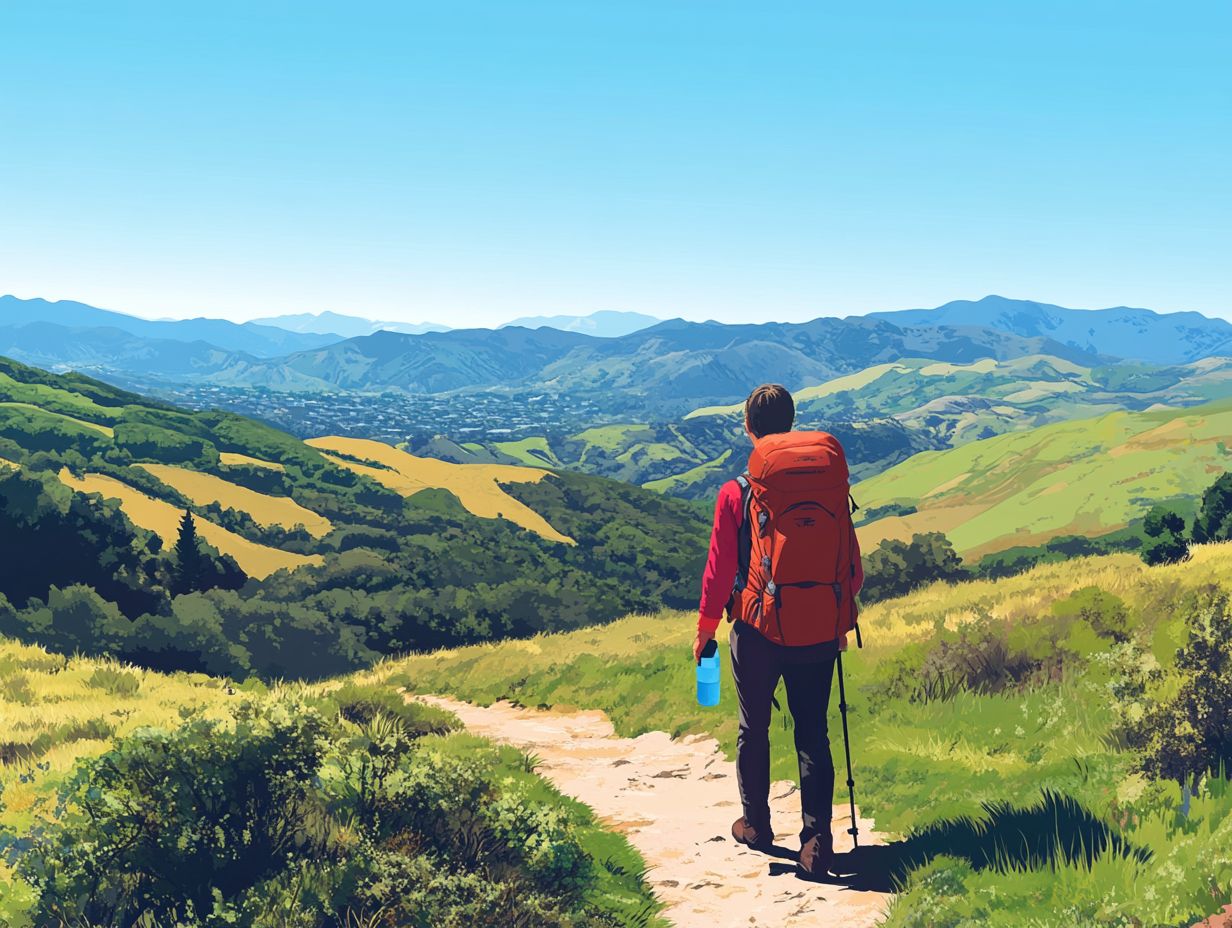
Recognizing the signs of dehydration is essential for maintaining your hydration levels and ensuring your safety during outdoor adventures.
If you start feeling excessively thirsty, dizzy, or fatigued, these are clear warning signs that your body needs fluids. A dry mouth or decreased urine output is your body’s way of signaling that it’s time to pause and rehydrate.
These signs impact your physical comfort and can hinder your cognitive functions, making it challenging to make safe decisions on the trail. Respond promptly by sipping water or electrolyte-rich beverages to avoid serious issues like heat exhaustion or heat stroke.
This proactive approach will enhance your overall hiking experience, allowing you to enjoy the great outdoors with confidence!
Rehydrating After a Hike
Rehydrating after a hike is just as important as staying hydrated during your trek. Replenishing electrolytes and fluids is crucial for recovery, ensuring you bounce back and feel your best.
Replenishing Electrolytes and Fluids
Replenishing electrolytes and fluids after a hike is essential. This helps restore your energy levels and meets your hydration needs.
You have various options to aid in this crucial recovery process. From sports drinks to electrolyte tablets, these products are specifically designed to replace vital minerals lost through sweat.
These products do more than just hydrate; they help restore the balance of sodium, potassium, and magnesium. These minerals are key players in muscle function and cramp prevention.
It’s equally important to adjust your fluid intake based on your activity level. Intense or prolonged hikes may call for more robust replenishment strategies compared to a leisurely stroll.
By maintaining this balance, you ensure that you stay energized and ready for your next adventure.
Importance of Proper Post-Hike Hydration
Understanding the significance of proper post-hike hydration can profoundly enhance your recovery and overall health benefits.
When you take the time to rehydrate thoroughly after your adventures, you re not just replenishing lost fluids. You re actively supporting your body s natural recovery processes.
This crucial practice reduces the risks of dehydration during your future outdoor activities. It ensures your energy levels remain high and your muscles stay ready for action.
Consistently maintaining optimal hydration levels can lead to improved endurance, sharper cognitive function, and a lower likelihood of fatigue or cramps.
This mindful approach to hydration makes your adventures safer and more enjoyable!
Frequently Asked Questions
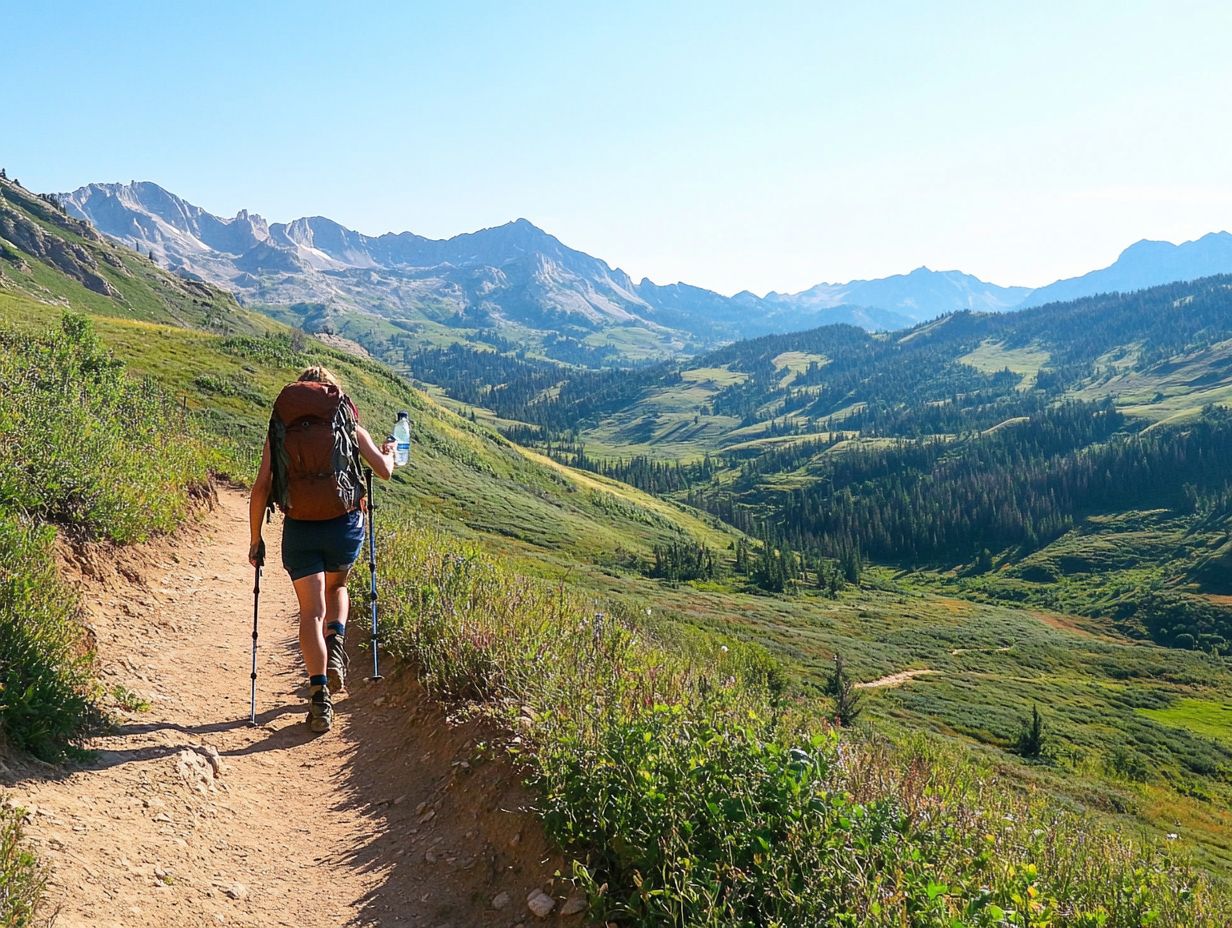
How can I stay hydrated while hiking?
To stay hydrated while hiking, bring enough water with you. A good rule of thumb is to carry at least 1 liter of water for every 2 hours of hiking.
What is the best way to carry water while hiking?
The best way to carry water while hiking is to use a hydration pack or a water bottle designed for outdoor activities. These options are lightweight and provide easy access to water.
How often should I drink water while hiking?
It is recommended to drink water every 15 to 20 minutes while hiking. Don’t wait until you feel thirsty to drink, as this is a sign that you are already dehydrated.
Are there any signs of dehydration I should watch out for while hiking?
Yes, some signs of dehydration include feeling thirsty, dry mouth, dark urine, dizziness, and fatigue. If you experience any of these symptoms while hiking, stop and drink water immediately.
Can I rely on natural sources of water while hiking?
While natural sources of water such as streams and lakes may seem convenient, it is not recommended to rely on them for hydration. They may be contaminated with bacteria and parasites that can make you sick. It is best to bring your own water for hiking.
What are some tips for staying hydrated while hiking in hot weather?
When hiking in hot weather, drink plenty of water! Stay hydrated to keep the fun going. Wear light, breathable clothing and take frequent breaks in the shade to cool down and drink water.
You can also add electrolyte packets to your water to replenish essential minerals lost through sweating.

